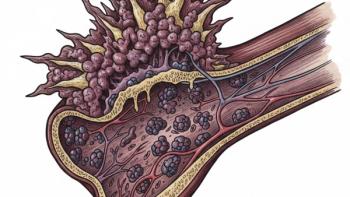
Regular Cervical Cancer Screening Reduces Mortality by 83 Percent
A recent study found a correlation between frequent cervical cancer screenings and decreased mortality.
According to a recent study, regular screenings for cervical cancer is associated with an overall mortality prevention rate of about 83 percent.
Authors of the population-based, case-control study, which was published in the British Journal of Cancer, estimated that, if all women in England were screened regularly — defined as every three years for women ages 25 to 49, and every five years for ages 50 to 64 — the crude mortality for women between the ages of approximately 25 and 79 would be half of the current statistics. Mortality would be 3.6 times higher in the absence of cervical screening.
If these associations are causal, the mortality rate would be 5.3 times higher in the absence of screening or 65 percent lower if all women were regularly screened between ages 50 and 64.
“Thousands of women in the UK are alive and healthy today thanks to cervical screening,” lead study author Peter Sasieni, Ph.D., a professor of Biostatistics and Cancer Epidemiology at the Queen Mary University of London Wolfson Institute of Preventive Medicine, said in a statement. “The cervical screening program already prevents thousands of cancers each year, and as it continues to improve, by testing all samples for the human papillomavirus, even more women are likely to avoid this disease.”
The current study included a total of 11,619 cases of patients with cervical cancer who were diagnosed between the ages of 25 and 79. The authors used data from the Audit of Invasive Cervical Cancers, which is a population-based, case-control study in England that was estimated to include approximately 90 percent of all cervical cancers with better completeness under the age of 65.
Fédération Internationale de Gynécologie et d’Obstétrique (FIGO) stage was recorded for 10,040 cancers, and of those with a known stage, over one-third was classified as stage 1A (37.5 percent), and 35.1 percent were diagnosed at stage 1B.
The stage distribution varied by age, whereas 58.1 percent of patients diagnosed between the ages of 25 and 34 were diagnosed at FIGO stage 1A, and 9.8 percent were diagnosed at stage 2 or higher. In patients who were diagnosed between 65 and 79, 67.5 percent were diagnosed at stage 2 or higher. Across the study population, screening was found to be associated with a reduction in cancer diagnoses.
Data were collected on all selected controls to remove potential participation bias. Prospectively recorded cervical cancer screening data were taken from routinely recorded cervical cytology records held on the Cervical Screening Call/Recall System. Therefore, these were not subject to recall bias.
In order to estimate the impact of screening on the risk of diagnosis at each particular stage, individual patient maximum screening interval was calculated. This was defined as the longest period during the screening window in which there were no adequate smears. These calculations were all then used to classify women as regularly, irregularly, very irregularly or not screened.
Researchers found a significant impact in screening practices on cancer incidence rates found when assessing patients between the ages of 50 and 64. The incidence rate would be over four times higher with no screening, and less than half if all patients were regularly screened.
Women diagnosed under the age of 25 were excluded from most of the analyses due to the common peak in prevalent cancer diagnoses at 25, which are when patients are first screened. Since these cancers are primarily early stage, including these subsets can skew the estimation of the effect of screening on cancer incidence.
However, sensitivity analyses in this study included women between the ages of approximately 24 and 25. Researchers also tested the effect of changing the screening window, assigning cancers with missing stage using other criteria, and applying stage 1A mortality to the 1A cancers in the absence of a screening scenario. These results suggested that including cervical cancers in women in this age range reduced the impact of screening in women under 35 years old by 21 percent for incidence and 16 percent for mortality.





